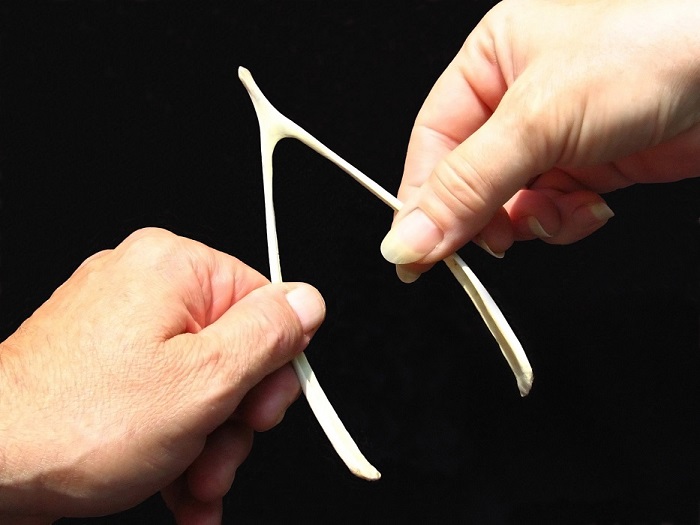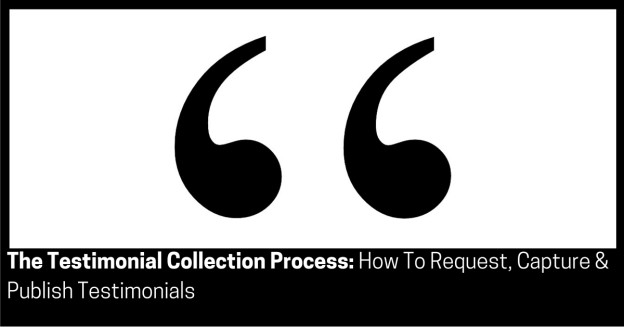Approximate read time: 13 minutes
Positive reviews are important for your brand.
If you can get testimonials, success stories and case studies for your brand then you may very well have an easier time selling to other prospects and customers.
If you cannot get testimonials, success stories and case studies for your brand then you may very well have a harder time selling to other prospects and customers.
Why is this?
Testimonials, success stories and case studies offer the following benefits to your brand.
- Relatability;
- Credibility;
- Believability;
- And much, much more
These benefits create social proof (authority) from third parties that helps your brand overcome sales concerns and objections when you are selling and negotiating.
Selling is not just about buying – it’s about helping people get outcomes and results (sales, sponsorship, partnerships, romantic relationships, jobs, customers, ambassadors and so on). In my opinion, it is one of the most valuable things you can do in life.
Social proof is powerful, Robert Caidini wrote in his book, Influence.
“People will do things that they see other people doing,” which in this case is follow and engage on social media if others are doing the same.
According to Australian Consumer Law, testimonials etc. “can give consumers confidence in a product or service on the basis that another person – particularly a celebrity or well-known person – is satisfied with the goods or services.”
Taken further, “misleading representations can persuade customers to buy something to their detriment, based on belief in the testimonial.”
Before we move on, let’s define some terms and explore the differences between testimonials, success stories and case studies…
Put simply, they are all condensed versions of a sales script with a focus on a prospect or customer point-of-view to illustrate a point on behalf of a brand.
A testimonial or recommendation or endorsement or praise or accolade is a statement testifying to a brand’s character and qualifications.
They are statements about an experience with a product, service or solution.
They are generally anything under a paragraph to a sentence long.
A success story is an account of the achievement of success, fortune, or fame by someone.
They have an emotional context and are more personal than a testimonial and they highlight a transformation or an outcome.
They are slightly longer than a testimonial – a paragraph or two.
A case study is demonstration of development over a period of time.
They are more detailed, factual or analytical and come from a brand perspective.
They are slightly longer than a case study – two or more paragraphs.
So next up, how do you go about obtaining reviews?
Here are the elements:
- STEP 1: Feedback Request;
- STEP 2: Testimonial Request;
- STEP 3: Capture Permission; and
- STEP 4: Publish.
Let’s begin with…

1) Feedback Request
…Before we get started, it’s worth discussing where to ask for a testimonial or feedback.
As general practice you should be following up with prospects and customers for testimonials and feedback at any time they have a touch point with your brand.
That could be everything from:
- Website;
- Advertising;
- Publicity;
- Content;
- Messages;
- Story telling;
- Marketing Communication;
- Sales Communication;
- Product Delivery;
- User Experience;
- After Sales Customer Service;
- And so on…
So when do you ask for a testimonial and what is the best timing?
- The best time for asking prospects and customers for testimonials and feedback is directly after they have used the product, service or solution (both free and paid) and got results;
- The second best time for asking prospects and customers for testimonials and feedback is while they are using your products, service or solution and having a positive experience, particularly if it is ongoing use;
- The third best time for asking prospects and customers for testimonials and feedback is right after they buy or purchase the product, service or solution, at the same time you ask for them to refer or share your brand.
But it’s most important that they have had a positive experience with you brand before you ask.
There are two ways to get testimonials:
- Organic; and
- Proactive.
Organic happens without your brand’s input.
Proactive happens with your brand’s input.
On the one hand, organic endorsements are ones that prospects and customers give without asking, such as on your social media or review sites.
On the other hand, proactive testimonials are ones where your brand reaches out to prospects and customers asking them proactively to give one.
This also means there is a two proactive ways to ask for testimonials and feedback:
- Indirectly – ask for feedback; and
- Directly – ask for a testimonial.
Indirect is better and more reliable and this is what this step is about.
This step will also discuss organic reviews.
As a rule, use feedback for a personal brand as testimonials can seem self-promoting and use testimonials for a product, service or solution.
This guide will show you how to take advantage of both.
Now to the first step…
This step is about proactively asking prospects and customers for feedback.
Feedback could be defined as their reaction to your product, service or solution.
Feedback doesn’t mention the word testimonial, and thus will reduce any resistance prospects and customers have about giving a testimonial.
This feedback can still be used as a testimonial as we will soon see.
When requesting feedback, you want to make it easy for the prospect or customer giving it.
Prospects and customers have many options to give feedback so give them instructions of how to do it easily.
They could record it in text form and send to you via:
- Email;
- SMS;
- Social Media;
- And so on…
The exact wording for asking prospects and customers for feedback is beyond the scope of this guide.
Sometimes prospects and customers take time to think and create feedback.
You have some options to speed this process up for them and make it easy.
This could be writing the dot points for what you would like them to cover.
This is great because it allows you to guide them and control to some degree what the feedback says about your brand.
Here we come across the first decision tree:
If prospects and customers respond negatively to your request for feedback, meaning potentially they had a negative experience with your product, service or solution, then you need to address this through customer service.
Customer service is beyond scope of guide.
If prospects and customers do not respond to your request for feedback, then you need to follow-up with them.
If you still don’t hear back, then you do not need to take any further action.
If prospects and customers respond positively to your request for feedback, meaning they potentially had a positive experience with your product, service or solution, then you need to ask them if you could use their feedback as a testimonial.
Likewise, if you have discovered an organic testimonial or feedback posted online about your product, service or solution then you begin the Testimonial Collection Process here.
This is a testimonial permission request that asks prospects and customers for permission to use their feedback as a testimonial.
Starting with feedback and then transitioning to testimonial as this step suggests, again reduces any resistance prospects and customers have about giving a testimonial as it is innocuous – it’s only feedback.
The exact wording for requesting testimonial permission is beyond the scope of this guide.
Next we come to the second decision tree:
If prospects and customers say yes to your testimonial permission request, you then need to capture the testimonial in a non-anonymous way.
This means taking a screenshot of the testimonial with identifiers.
An identifier in this situation could be (in descending order of credibility):
- A video of the prospect or customer;
- An audio clip of the prospect or customer;
- A photo of a prospect or customer;
- The prospect’s or customer’s full name;
- The prospect’s or customer’s first name;
- The prospect’s or customer’s credentials; and
- The prospect’s or customer’s location.
The modalities for capturing (and displaying this) that relate to this non-anonymous testimonial are:
- Screenshot of text;
- Digital text; and
- Physical text.
This is because you have asked for feedback not a testimonial and a prospect or customer would not normally capture their feedback in video or audio form.
Alternatively, if prospects and customers say no to your testimonial permission request, then you will still capture the testimonial but in an anonymous way.
This means taking a screenshot of the testimonial WITHOUT identifiers.
Anonymous testimonials are okay too, but they should be your second preference.
An identifier in this situation could be (in descending order of credibility):
- A video of the prospect or customer;
- A photo of a prospect or customer;
- The prospect’s or customer’s full name;
- The prospect’s or customer’s first name only;
- The prospect’s or customer’s title or position; and
- The prospect’s or customer’s location.
The first three would need to be blocked out to protect their identity as they have not given permission to associate their testimonial with themselves, thus no identifiers.
The modalities for capturing (and displaying this) that relate to this anonymous testimonial are:
- Screenshot of text;
- Digital text; and
- Physical text.
Again, this is because you have asked for feedback not a testimonial and a prospect or customer would not normally capture their feedback in video or audio form.
When information is blocked out to protect their identity, a screen shot is best evidence that real person said it, rather than text modality.
Of course, the exact details of how to do this are beyond the scope of this guide.
This step is about requesting feedback.
This leads us to the Testimonial Request step…

2) Testimonial Request
…This step is about requesting a testimonial.
The alternative to proactively asking for feedback is directly asking for a testimonial.
This may increase resistance with prospects and customers, so that is why it is listed as the second option.
Here is the third decision tree:
If prospects and customers say no to your testimonial request, then you do not need to take any further action.
If you don’t hear back from your testimonial request, you then need to follow up.
If still don’t hear back, then you do not need to take any further action.
If prospects and customers say yes to your testimonial request, then you need to capture the non-anonymous testimonial.
This request is about asking prospects and customers for a testimonial – this means you will use an identifier.
An identifier in this situation could be (in descending order of credibility):
- A video of the prospect or customer;
- An audio clip of the prospect or customer;
- A photo of a prospect or customer;
- The prospect’s or customer’s full name;
- The prospect’s or customer’s first name;
- The prospect’s or customer’s title or position; and
- The prospect’s or customer’s location.
The modalities for capturing (and displaying this) in order of credibility that relate to this non-anonymous testimonial are:
- Video;
- Audio;
- Images;
- Screenshot of text;
- Digital text; and
- Physical text.
Here we have added video, audio and images because you have asked for a testimonial and a prospect or customer could capture their testimonial in video, audio or image form.
When requesting a testimonial, like with requesting feedback, you want to make it easy for prospects and customers giving it.
Prospects and customers have many options.
Give them instruction of how to give a testimonial easily.
They could record it in the following forms:
- Video recorded on their smart phone;
- Audio recorded on their smart phone;
- Photo recorded on their smart phone;
- Digital text; and
- Physical text.
And sent to you via:
- Email;
- SMS;
- Social Media;
- And so on…
The exact wording for asking prospects and customers for testimonials is beyond the scope of this guide.
Sometimes prospects and customers need to take time to think and create testimonials.
You have some options to speed this process up for them and again make it easy:
- You can write the testimonial for them and send to them to review and edit it for their own voice so it is not a duplicate; and
- The alternative that allows you to scale is write dot points for what you would like them to cover.
The first option is hard to scale for your brand if you have lots of prospects and customers as you will have to write new and unique testimonials each time.
Either of these versions is great because it allows you to guide them and control to some degree what the testimonial says about your brand.
Of course, the exact details of how to do this are beyond the scope of this guide.
This step is about requesting a testimonial.
This leads us to the Capture Permission step…

3) Capture Permission
…This step is about capturing permission.
Let’s talk about the elephant in the room…
False and misleading testimonials.
NOTE: What follows is not legal advice.
But it is unlawful to make, or use, false or misleading testimonials.
You can read the Competition and Consumer Act here: http://www.legislation.gov.au/Details/C2015C00327.
Here are some guidelines that may help you comply:
- Testimonials need to be true and correct;
- They need to be from real customers about their experience with your product, service or solution; and
- By law you are required to have proof that testimonials are true and correct and from real customers about their experience with your product, service or solution.
The easiest way to capture permission is via screen shots of permission granted in the previous steps.
You want to use testimonials “as is”, without any editing as this shows it’s real and also complies with the Act.
“As is” versions may not look polished, but this is a good thing as it shows it is from a real person.
Of course, the exact details of how to do this are beyond the scope of this guide.
This step is about capturing permission.
This leads us to the Publish step…

4) Publish
…This step is about publishing the testimonial.
Once you have received and captured permission, it’s time to publish.
Capture and post the testimonial in its original form – again this shows it’s from a real person.
However, you could translate the original content into other modalities in the following deciding cascading order:
- Video;
- Audio;
- Image;
- Screenshot of text; and
- Digital text.
Or you could publish multiple modalities of the same testimonials for different learning styles.
In terms of laying out the testimonials, vertical is best as that is how physical and digital content is formatted.
You should schedule in collecting testimonials continually and on a regular basis.
Clichéd shampoo instructions indicate you should use the product, service or solution then rinse and repeat the process. You will do the same here – continuously repeating.
Of course, the exact details of how to do this are beyond the scope of this guide.
This step is about publishing feedback and testimonials.
Take Action
You made it…
You now have a solid plan for navigating testimonials to increase your marketing and sales.
That’s the full Testimonial Collection Process, and it will be more than enough for you to get started on your own.
You can get the printed illustrated Process Map of this and 20 others for free, here
And if you’re serious about marketing and selling more, the logical next step is to contact me to help you do it yourself, have me do it with you, or have it all done for you.
This maybe the momentum you need to get great marketing and sales results.
Now let’s learn about The Marketing & Sales Launch Process.
Or do you simply want more like this?
Join below to be notified immediately about new content and more. No annoying daily emails and no spam – just good content when it’s posted.


Really good comprehensive guide!